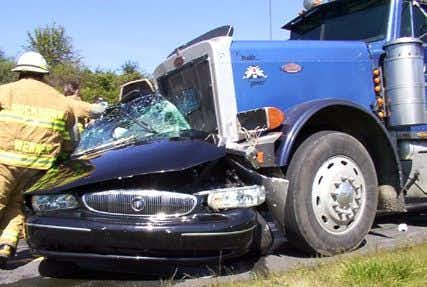This case involves a truck accident. The defendant, a professional truck driver, was asked to deliver a large shipment of electronics from Cleveland to Topeka. The thirteen-hour drive occurred without an incident, and he helped to unload the materials. Previously, he had been instructed to rest in Topeka, but, after unloading his cargo, he decided to drive back to Cleveland. After four hours on the road, the defendant began to feel sleepy, but continued driving, hoping to arrive back in Cleveland before the following night. The plaintiff was driving in an RV with her family. The highway they were on had a limited divider, and the defendant allegedly fell asleep, crossed into the other lane, and struck the plaintiff’s mobile home. The plaintiff sustained serious injuries, breaking both of her legs and fracturing her spine. Her family also sustained numerous injuries. The plaintiff retained an expert in vehicle accident reconstruction. During litigation, there was a dispute as to how fast the truck was going; the accident required a visual reconstruction, preferably using Jvt image processing.
Question(s) For Expert Witness
1. How can the speed of the truck be determined, and what challenges exist when analyzing the speed of a larger vehicle?
Expert Witness Response
When reconstructing an accident involving a semi-truck, the factors in the truck have to be considered in tandem with the specifics of the semi-trailer. Given the facts of this case, it appears that the semi-trailer was empty, which has to be factored into the analysis. Other challenges unique to semi-trucks involve the number and placement of the axles and the drive shaft. Once these variables can be accounted for, the different elements of accident reconstruction can be considered. For an accident like this, the size of the vehicles, the road (including any inclination), the weather conditions, point of impact, model of both vehicles, and weight of each vehicle are considered. From there, the factors can help to create a model which can provide an accurate determination of the speeds of the vehicles. In order to provide greater accuracy, the two damaged vehicles have to be examined to view the damage. With these elements, however, the speed can be determined.
About the author
Stephen Gomez, J.D.
Stephen Gomez, J.D., is the General Counsel and Corporate Secretary at Lumos Labs, where he oversees legal and compliance matters in areas like privacy, intellectual property, and litigation. He has extensive legal experience in the e-commerce, media, and entertainment industries, previously holding key roles at Thirstie, Equinox Media, and SeatGeek. Gomez also contributed to legal functions at HelloFresh and Chubb and has a background in legal content and research management. He earned his J.D. from Boston University School of Law and a B.A. in Politics from New York University. His expertise lies in providing strategic legal advice to fast-growing companies.



